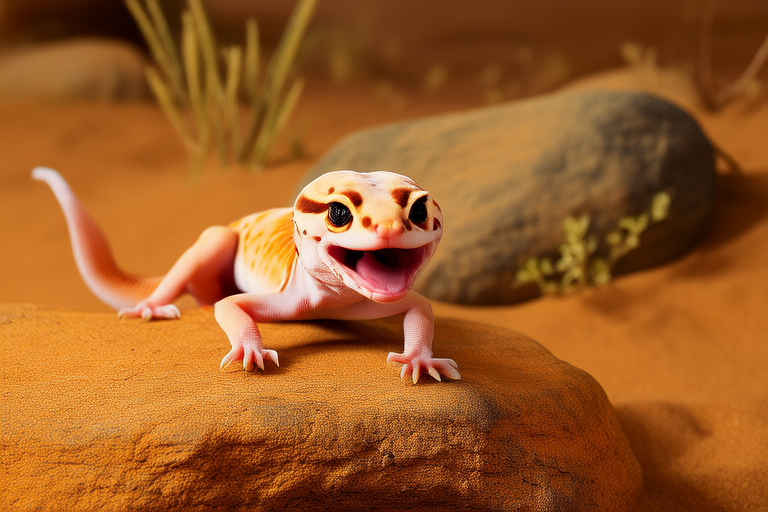Unlocking the Secrets of Bearded Dragon Behavior: What’s Your Lizard Trying to Tell You?
Welcome to the fascinating world of bearded dragons! These captivating reptiles are not just pets; they’re creatures with distinct personalities and a range of behaviors that can tell us a lot about their mood, health, and needs. Understanding your bearded dragon’s behavior is key to providing the best care possible. In this article, we will explore some common behaviors of bearded dragons and what they might mean, helping you become a more informed and attentive owner.
Puffing Up Their Beard
One of the most striking behaviors of bearded dragons is when they puff out their beards. This action is usually a sign of stress or aggression. For instance, if another animal or even a human approaches too closely, your dragon might puff its beard as a way to look larger and more intimidating. This is their way of saying, “Back off!” It’s important to respect their space and give them time to calm down. If your dragon frequently puffs its beard, it might be a good idea to review its environment and ensure there are no stressors.
Darkening Colors
Bearded dragons can also change their skin color, which is often linked to their mood or temperature. When they feel threatened, stressed, or preparing to cool down, their skin may darken. Conversely, when they are warm and comfortable, their skin tends to lighten. Imagine your dragon relaxing under a heat lamp; its colors might appear brighter and more vibrant. Pay attention to these changes as they can indicate whether your dragon is feeling at ease or under duress.
Body Language During Feeding
During feeding time, your bearded dragon’s behavior can offer valuable insights into its health and well-being. A healthy bearded dragon will display active interest in its food, eagerly reaching out for crickets or vegetables. On the other hand, if your dragon shows little interest in eating, it might be a sign of illness or discomfort. For example, if your dragon has recently been puffed up or darker than usual, it might be feeling unwell. Always monitor your dragon’s eating habits and consult a vet if you notice any prolonged disinterest in food.
Activity Levels by Time of Day
Bearded dragons are diurnal, meaning they are most active during the day. They typically spend their mornings basking under UVB light to absorb calcium and vitamin D3, which helps in bone growth and metabolism. As the day progresses, they may become more playful and curious, exploring their enclosure or interacting with their surroundings. However, bearded dragons can also have periods of rest, especially in the afternoon when temperatures peak. Understanding these patterns can help you schedule activities like handling or cleaning at times when your dragon is most alert and responsive.
Social Interactions
Bearded dragons are generally solitary animals, but they can interact with humans and other bearded dragons in certain contexts. With humans, they can become quite affectionate, allowing gentle handling and petting. Some dragons enjoy being held, while others prefer to remain on their favorite perch. When introducing a new bearded dragon to your home, proceed cautiously. Bearded dragons can be territorial, so they might show signs of aggression towards newcomers. If you have multiple dragons, ensure they have enough space and resources to avoid conflicts.
Stress Signals
Recognizing stress signals in your bearded dragon is crucial for maintaining its health and happiness. Common stress indicators include hiding more frequently, reduced appetite, and lethargy. For example, if your dragon suddenly starts spending all its time under a hide box, it might be feeling anxious or insecure. Other signs of stress could include frequent puffing of the beard or darkening of the skin. Addressing the root cause of stress, such as overcrowding, improper lighting, or sudden environmental changes, can significantly improve your dragon’s well-being.
Actionable Advice for Better Care
Now that you’ve learned about various bearded dragon behaviors, here are some practical tips to enhance your pet’s life:
- Create a Comfortable Environment: Ensure your dragon has a spacious, well-lit habitat with appropriate heating and lighting. Regularly check the temperature and humidity levels to prevent stress and promote health.
- Encourage Natural Behaviors: Provide opportunities for climbing, digging, and exploring within the enclosure. This can include adding branches, rocks, and hides.
- Monitor Eating Habits: Keep track of your dragon’s eating patterns and adjust its diet as needed. Consult a veterinarian if you notice significant changes in appetite.
- Handle with Care: Approach your dragon gently, allowing it to get used to your presence before attempting to handle it. Respect its boundaries and avoid forcing interaction.
- Stay Alert for Changes: Be vigilant about any changes in your dragon’s behavior. Early detection of unusual behaviors can lead to timely interventions and better outcomes.
Conclusion
Understanding your bearded dragon’s behavior is an essential part of responsible pet ownership. By recognizing the various cues your dragon provides, you can create a nurturing and enriching environment. From puffing out its beard to changing colors, each behavior offers a window into your dragon’s world. By paying close attention and acting on these insights, you’ll not only deepen your bond with your pet but also ensure its overall health and happiness. Remember, a well-cared-for bearded dragon is a happy and thriving one!
